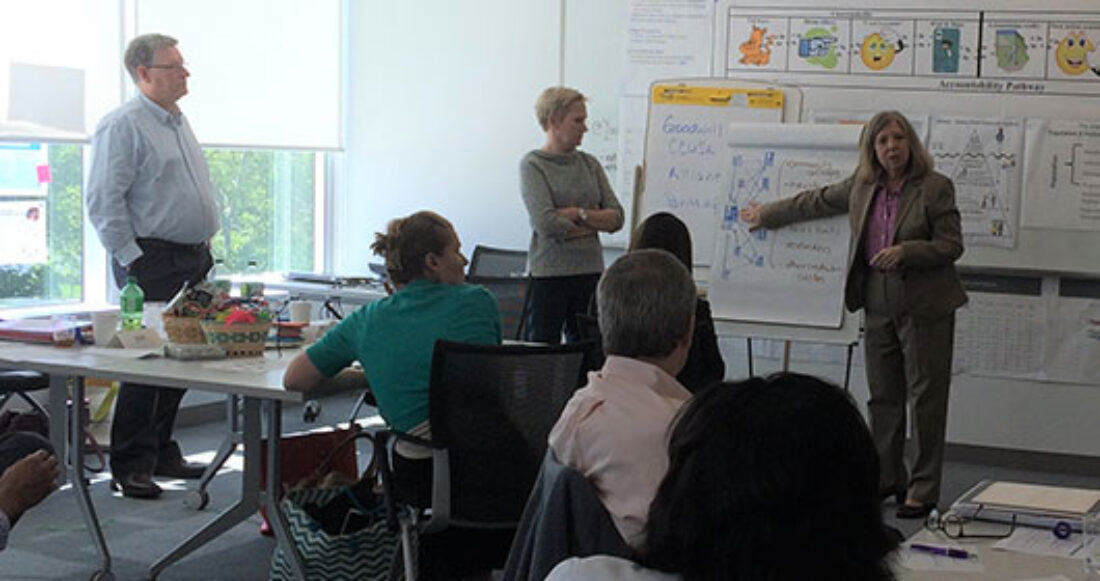Results Count: Helping Large Service Providers Get Results

Since fall 2015, the Annie E. Casey Foundation has supported three national nonprofits in Results Count™, a leadership program designed to propel large-scale change within a results-based framework. Participants report that the program has had a top-to-bottom impact on their organizations, transforming everything from their daily business to how they hold themselves accountable to the combined 15 million people they serve each year.
Three leaders from these organizations — the Alliance for Strong Families and Communities, Catholic Charities USA and Goodwill Industries International — reflect on their Results Count experiences below:
Polina Makievsky, senior vice president of knowledge, leadership, and innovation
Alliance for Strong Families and Communities
By participating in Results Count, which emphasizes outcomes rather than outputs, the Alliance has redefined what success looks like to become more effective agents of change. “The work of social service organizations is fundamentally messy, which can be very overwhelming,” says Makievsky. “Results Count gave us a set of tools to lean in to the complexity. It scripted the moves for turning something complex into something manageable.”
The program also helped the Alliance morph structurally — from a trade membership association to a unified strategic network. Explains Makievsky: “Instead of seeing ourselves as an umbrella organization trying to cover the needs of many diverse individual members, we started to ask, how can we use the collective voice of this network to create real change and achieve a specific result? How can we support the members of this network to make them agents of change toward that result?”
Jean Beil, senior vice president for programs and services
Catholic Charities USA
Beil credits Results Count with helping her organization streamline its efforts and view its work in a more integrated way. “We came to the Results Count program with seven strategic priorities that we were able to bring together into one common result — that all individuals, families and communities in the United States and its territories have the human, financial and social capital to reach their full potential,” she says.
The program has also inspired the nonprofit — which counts 165 catholic charities as members — to alter its annual survey. Instead of capturing key network activities, the revamped tool is designed to describe the organization’s impact.
Wendi Copeland, senior vice president of strategy and advancement
Goodwill Industries International
At Goodwill, Results Count prompted leaders to take time outside of their daily work to closely consider their use of data and accelerate a data analytics initiative to support equity within their organization’s network. “Throughout the program, we were challenged and equipped to think more critically about our results and explore opportunities to refine and define direction and strengthen equity,” says Copeland.
Moving forward, Goodwill, the Alliance and Catholic Charities USA plan to work together to pursue a shared result — advancing equity in and throughout their organizations. This summer, the nonprofits will jumpstart their journey by participating in calls to learn and explore how they can help ensure that people of color, and people from other underrepresented demographic groups, have equitable opportunities to advance.
“We wondered how we could see to it that people who lead communities also represent the communities they serve — not just in the national office, but at local agencies, as well,” Copeland explains. The resulting collaboration has far-reaching implications. As Copeland puts it, “These leaders would have a greater understanding of their community’s experience, which can only help in the delivery of services.”
Watch a video on creating high alignment, high impact
Learn more about getting communities to work together for results





